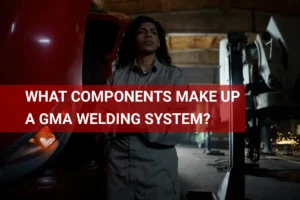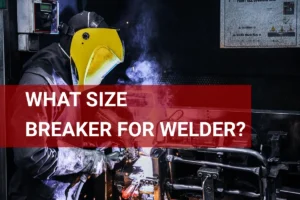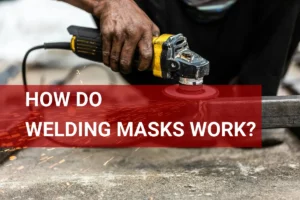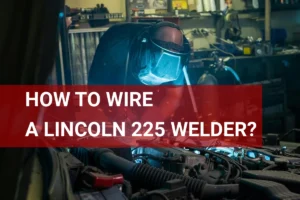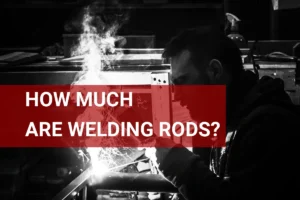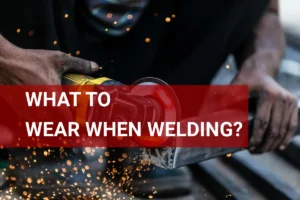What Size Welder Do I Need? Learn to Choose, Understand Types, and Determine Requirements
Published on: February 22, 2025 | Last modified: March 4, 2025
By: Joe Carter
The size of a welder refers to its power and capability to perform welding tasks. Basically, it affects how thick materials you can weld and the types of projects you can take on.
A question that keeps coming up is, what size welder do I need? This question is crucial because picking the right size can make all the difference in your project outcomes. From my experience, using the wrong size led to inadequate welds, wasting time and materials.
In this guide, we’ll cover how welder size works, different types of welders, steps to determine your welder size, factors impacting size requirements, common issues with various sizes, aftercare tips, applications for different welder sizes, and alternatives to choosing size. You’ll also learn what size mig welder for auto body and other specific applications.
Contents
- What Size Welder Do I Need?
- How Does the Size Of Welder I Need Work?
- Types Of Welders
- Steps to Determine Welder Size
- Factors Affecting Welder Size Requirements
- Common Issues and Troubleshooting
- Applications Of Different Welder Sizes
- Choosing the Right Welder Size for Specific Projects
- Are There Any Alternatives to Choosing Welder Size?
- Frequently Asked Questions (FAQs)
- Conclusion
- Additional Reading
What Size Welder Do I Need?
Choosing the right welder depends on the materials and projects you tackle. For light work, like auto body sheets, a 120V (Volt) MIG welder is ideal. Heavy projects, like car frames, often require a 240V MIG or TIG welder for better performance. A common challenge in welding is dealing with defects such as porosity, which can compromise the strength and appearance of a weld. To effectively address this, it’s essential to understand what causes porosity in welding and how to prevent it.
How Does the Size Of Welder I Need Work?
Choosing the right size welder is crucial for your projects. It largely depends on the material and its thickness. For instance, a MIG welder typically operates between 30 to 250 Amps (A), making it suitable for thin sheet metal to thicker pieces. If you’re welding steel up to 8 mm (5/16 Inch) thick, a 140 Amp MIG welder works well.
For automotive work, like car frames, aim for a welder capable of 180-200 Amps, especially for thicker metals. Knowing the right welder size can save you time and frustration in your projects.
I once made a mistake by diving into a car project without checking my welder’s size. I used a smaller MIG welder and struggled with thicker metal. In the end, I realized I’d have been better off with a 250 Amp welder for stronger joints and cleaner welds on auto body repairs.
Types Of Welders
What types of welders should you consider?
-
MIG (Metal Inert Gas) Welders
MIG welders use a wire feed to create a strong bond. For personal projects, a 130-amp unit works well for most tasks. When looking for suitable options, consider the range of welding equipment available. For sheet metal and auto body work, choose a welder with a duty cycle of at least 20%.
It is crucial to be informed about safety measures, especially concerning severe eye damage from weld flash incidents.
-
TIG (Tungsten Inert Gas) Welders
TIG welders provide precise control for clean welds. If you’re working with thin materials, a 150-amp welder is ideal. For best results, select one with a high-frequency start and adjust settings based on metal thickness. When welding pipes, it’s crucial to understand how to weld pipe with 6010 for achieving strong and reliable joints.
-
Stick Welders
Stick welders use coated electrodes to melt metal. For farm equipment and outdoor projects, a 200-amp welder is a good choice. Check the recommended amps for your electrode size to find the right settings. Seam welding also involves the use of electrically powered tools which create continuous welds and understanding what is seam welding can expand your knowledge of welding techniques.
-
Flux-cored Welders
Flux-cored welders work well outdoors since they don’t require shielding gas. A 125-amp machine handles most jobs, while for heavier steel, you might consider a model of 130 amps or higher based on material thickness.
To ensure clean welds, avoiding spatter is crucial during the process. Learn more about effective methods to reduce welding spatter.
-
Multi-process Welders
Multi-process welders can perform MIG, TIG, and Stick welding. A 250-amp machine meets various needs. Consider your projects when selecting one, as this flexibility can save time and money.
We’ve wrapped up the different welder types here. Next up, we’ll look at how to determine the appropriate welder size.
Steps to Determine Welder Size
Here are the essential steps to find the right welder size.
-
1. Assess Your Projects
Consider what you’ll weld. For thin automotive metal, a welder around 130-180 amps works for MIG. Thick materials, like steel sections, may need up to 250 amps. The thicker the metal, the larger the welder.
Protecting your eyes during welding is crucial to prevent injury. Improper protection from bright arcs can lead to serious eye conditions such as arc eye. If you need to address this specific condition, this guide on treating flash burn in eyes offers detailed treatment procedures.
I remember the first time I tried to weld a car frame with a 120-amp welder—it just couldn’t cut it! Analyze your project’s needs to avoid wasting time and materials.
-
2. Check Material Thickness
Use a thickness chart to match amps to metal. Generally, for MIG welding, aim for 1 amp per 0.001 inch of thickness. For 1/4 inch (6.35 Mm) steel, use a welder with about 250 amps.
Knowing the thickness helps you choose wisely. Choosing incorrectly can lead to weak, unreliable welds unless there’s extra reinforcement.
-
3. Choose Your Welding Type
Identify if you’re using MIG, TIG, or Stick. MIG is user-friendly and works for automotive frames, while TIG provides cleaner welds for thinner materials. Each type has different power requirements, ranging from 140 to 300 amps.
I once chose a TIG welder for its reputation, but the learning curve was steeper than expected for automotive work. Balance user-friendliness with the job’s needs!
-
4. Calculate Duty Cycle
This indicates how long your welder can run before needing a break. A lower duty cycle, like 20% for a 140-amp welder, overheats quickly during long welds. For consistent heavy projects, aim for over 30% at maximum load.
If you’re welding for hours, choose a welder with a higher duty cycle. Being in between can lead to frustration, delays, and wasted time.
-
5. Factor in Voltage Options
Select a welder that allows voltage adjustment. A 230V (Or 240V) welder generally produces higher heat, ideal for thicker materials. In contrast, a 120V (Or 110V) welder suits light projects and body panels.
I knew someone who couldn’t weld a frame with a 120V unit and ended up with weak joints. Voltage varies greatly between jobs—choose wisely!
-
6. Think About Portability
If you need to move your welder, consider its weight and size. A 200 amp MIG welder can weigh around 70 lbs (32 Kg). For smaller projects or tight spaces, a lightweight model often suffices.
I learned the hard way that dragging a bulky welder around can lead to back pain! Decide early if you need portability.
-
7. Review Cost and Brand Reliability
Your budget is important. A reliable welder costs between $200 and $1,500, depending on features and size. Stick with reputable brands to invest wisely and get warranties and support.
Some cheaper models may seem tempting, but check reviews first. I regretted choosing low-cost options that fell apart mid-job!
You should now have a good understanding of how to assess welder size. In the next part, we’ll discuss influencing factors.
Factors Affecting Welder Size Requirements
What factors influence your choice of welder size? Let’s break it down.
-
Material Type
The material type dictates the welder’s power. For example, aluminum needs higher settings due to its thermal conductivity—usually 100-150 amps (A) for a MIG welder.
-
Thickness Of Materials
Thicker materials require more power. A good rule of thumb: for mild steel around 1/8 inch (3 Mm), use at least a 140-amp (A) welder. For 1/2 inch (12 Mm), you might need a 250-amp (A) welder.
-
Welding Technique
It’s crucial to differentiate between MIG and TIG welding. I once thought a smaller MIG welder could handle everything, but it struggled with thicker joints and caused defects.
-
Environment and Positioning
Working outdoors or in less optimal positions may require a more powerful welder. Wind affects gas shielding, so ensure your welder can handle the conditions.
-
Welder Duty Cycle
The duty cycle indicates how long a welder can operate within a 10-minute period without overheating. For consistent work, look for a 60% duty cycle at 200 amps. This means it can run 6 minutes at full power.
We covered elements influencing welder size needs. Next, we will cover typical problems and solutions in welding.
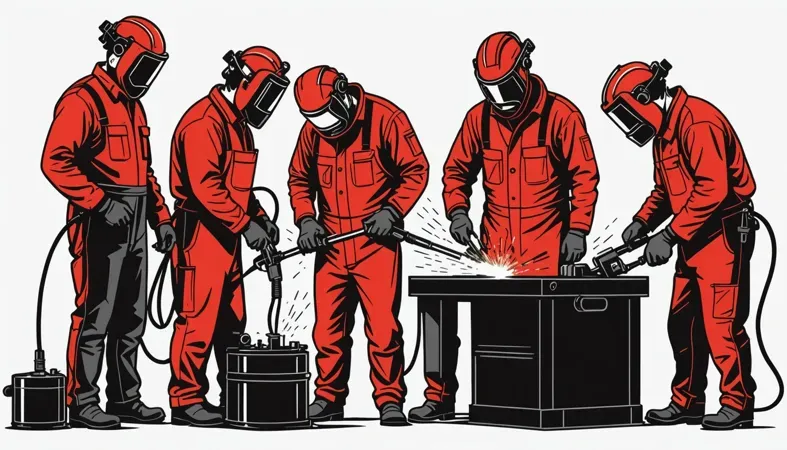
Common Issues and Troubleshooting
Now, let’s look at issues unique to welder sizes.
-
Inadequate Heat Penetration
A welder’s size can limit heat penetration. If you notice undercutting or weak bonding, check the welder’s amperage. Ideally, set it between 70-90% of its maximum. Increasing the size can help.
-
Welding Arc Instability
I once mistakenly used a small welder for thicker steel. To fix this, get a larger welder. Watch for an erratic arc with insufficient amperage.
-
Excessive Spatter
A welder’s size affects spatter; a low setting increases spatter levels. Use a larger welder and adjust the feed until you achieve cleaner welds.
-
Inconsistent Weld Beads
A welder’s size plays a crucial role in consistency. If you notice inconsistent beads, ensure the welder’s voltage matches the material thickness. Match your welder size to the task.
-
Overheating and Burn Through
A welder’s size can cause overheating issues, especially on thin materials. Use a smaller welder or lower the amperage to prevent burn-through.
That covers common issues and troubleshooting. Let’s now take a look at the applications of different welder sizes.
Applications Of Different Welder Sizes
I’ve used various welders for different tasks, and they have specific applications, such as:
- Auto Body Repair: A smaller MIG welder (160A or Less) is ideal for welding car panels. It easily handles thin sheet metal without burning through, making it popular in auto shops.
- Custom Motorcycle Frames: For custom frames, you’ll need a larger welder (Around 250A). It provides enough power to weld thicker tubing, ensuring strength and safety.
- Heavy Steel Fabrication: A TIG welder (300A) is commonly used in heavy steel applications. It achieves precise welds, making it suitable for structural work. Professionals appreciate its versatility.
- Farm Equipment Repair: A 200A MIG welder is often used to repair large farm implements. Its ability to weld thicker materials effectively repairs breaks or cracks.
Choosing the Right Welder Size for Specific Projects
When deciding on a welder size, it’s important to consider the specific projects you’ll tackle. Here’s an overview of suggested welder sizes for common applications:
| Application | Welder Type | Recommended Size | Power Source |
|---|---|---|---|
| Auto Body Repair | MIG | 130-180 Amps | 120V (110V) |
| Heavy Steel Fabrication | TIG | 200-300 Amps | 240V |
| Custom Motorcycle Builds | MIG | 200-250 Amps | 240V |
| Farm Equipment Repair | Stick | 200-250 Amps | 240V |
| Light Fabrication | Flux-Cored | 125-140 Amps | 120V (110V) |
| Pipeline Welding | MIG/TIG | 300 Amps+ | 240V |
These recommendations help you select the appropriate welder size based on typical project needs, ensuring successful outcomes.
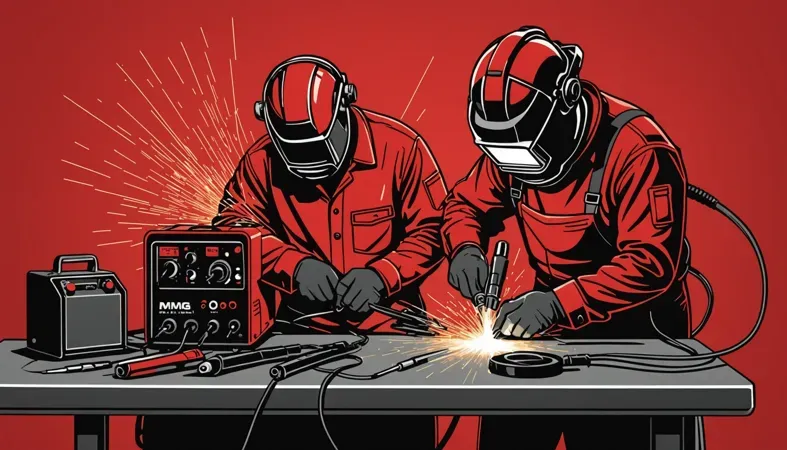
Are There Any Alternatives to Choosing Welder Size?
There are several alternatives if you’re not ready to pin down a welder size. For instance, consider using a portable welding machine like the Hobart Handler 140; it’s versatile for many projects, from auto body repairs to light fabrication. If you need something for thicker metal, a 250 Amp welder, such as the Lincoln Electric Power MIG 260, might fit the bill. To ensure safe welding practices, it is essential to understand how to prevent inhaling welding fumes.
If there’s one thing I’ve gained from my journey, it’s that flexibility truly counts. Sometimes, you can achieve excellent results with specific techniques, like using a TIG Welder for a smoother finish or learning about different welding processes based on your needs. Always match your tools to the job at hand!
Frequently Asked Questions (FAQs)
Now let us look at some questions I typically get asked.
How Do I Know What Size Weld I Need?
To know what size weld you need, consider the metal thickness and type. For instance, a 3/16 inch (4.76 Mm) thick steel may require a welder with at least 180 amps for quality results. Thicker materials demand more power, so paying attention to specifications is crucial. Proper equipment setup is essential, which includes knowing how to ground a welder for safety and efficiency.
How Thick Can a 200-amp Welder Weld?
A 200-amp welder can typically weld metal up to 1/2 inch (12.7 Mm) thick. This is effective for heavier projects like structural work. Keep in mind that factors like joint design and welding technique also play a big role in weld quality. It’s essential to have the right setup and equipment for effective welding, including considering the optimal height of a welding table.
How Thick Can a 150-amp Welder Weld?
A 150-amp welder can handle materials up to 3/8 inch (9.53 Mm) in thickness. It’s great for most automotive tasks, but if you’re working with thicker metals, you might need a higher amperage welder.
What Size Welder for Automotive Projects?
For automotive projects, a 120-amp to 200-amp welder is typically recommended. This range allows you to weld thin car panels as well as heavier parts like frames. Choosing a suitable welder ensures you get strong, clean welds.
What Size MIG Welder for Car Panels?
A 130- to 170-amp MIG welder works best for car panels. This range allows you to weld thin sheet metal, usually 22 to 18 gauge (0.76 Mm to 1.22 Mm) efficiently. Using the right size prevents burn-through and ensures a strong bond.
What Size Welding Tank Do I Need?
For MIG welding, a 40 cubic feet (Ft³) tank is a common choice. It provides enough shielding gas for moderate use. If you’re welding regularly, consider getting larger tanks to avoid frequent refills.
Conclusion
We covered what size welder you need by discussing the types of welders, steps to determine the welder size, factors affecting size requirements, common issues and troubleshooting, and aftercare. We also looked at applications for different welder sizes and alternatives to choosing welder size. Finally, we answered some frequently asked questions.
So, what size welder do you need? If you’re working on auto body, a MIG welder around 140-180 amps (About 130-150 A for Typical Home Use) should do the trick. Contact me if you’d like more guidance on specifics like what size MIG welder for car panels or the appropriate welding tank size.
If you’ve found this information helpful, you might want to explore more resources and tips at What is Welding.
Additional Reading
- American Welding Society. (2020). AWS Welding Handbook: Welding Science and Technology (Vol. 1). Miami, FL: AWS.
- American Welding Society. (2020). AWS C5.6: Recommended Practices for Gas Metal Arc Welding. Miami, FL: AWS.
- Blodgett, O. W. (1996). Design of Welded Structures. Cleveland, OH: James F. Lincoln Arc Welding Foundation.
- Blodgett, O. W. (1995). Design of Weldments. Cleveland, OH: James F. Lincoln Arc Welding Foundation.
Joe Carter is a retired welding professional with over 40 years of hands-on experience in the industry, spanning ship repair, structural welding, and even underwater projects. Joe is a master of MIG, TIG, and Stick welding. Passionate about mentoring the next generation of welders, Joe now shares his decades of expertise and practical insights to help others build rewarding careers in welding.
American Welding Society, Auto Body Repair, MIG Welding, TIG Welding, Welder Size, Welding, Welding Projects, Welding Table, Welding Techniques
